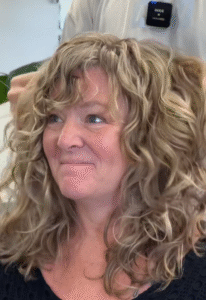Curly hair has always been unforgettable. Its spirals, coils, and waves carry life and movement that make every head of curls unique. Yet for far too long, society made people with curly hair feel as though their natural beauty wasn’t good enough. Straight hair dominated the magazines, commercials, and runways, while curls were labeled messy, unprofessional, or difficult to manage. This created a cycle where people fought against their own texture with straighteners, relaxers, and heat styling, often leaving hair weak, dry, and damaged. More painful than the physical toll was the sense of insecurity that came with believing natural curls weren’t acceptable.
That narrative has begun to change, and the shift has been transformative. People are now embracing curls as symbols of individuality and strength, rejecting the outdated idea that beauty must look one certain way. The curly hair transformation is not just about appearance; it is about empowerment, authenticity, and pride.
The journey begins with understanding what curls need. Because of their shape, natural oils from the scalp struggle to coat curly strands evenly, leaving hair prone to dryness and frizz. This explains why traditional shampoos, filled with sulfates, left curls even more brittle. Today, routines are centered around hydration. Gentle cleansers protect natural moisture, conditioners restore softness, and deep treatments strengthen hair from within. Natural oils like argan, coconut, and jojoba are being used to seal in hydration, giving curls the bounce, shine, and health they need to thrive.
Styling has also taken on new meaning. Instead of forcing curls into sleek, straight looks, people are learning to enhance their natural texture. Techniques such as finger-coiling, twist-outs, and plopping allow spirals to form beautifully while keeping frizz under control. Diffusers used on low heat encourage volume without damage, and modern products like curl creams and lightweight gels provide definition without stiffness. Protective styles such as braids or buns add versatility while allowing curls to rest and remain strong. What was once a battle has become a process of creativity and pride.
Cultural change has amplified this movement. Social media platforms are filled with curly-haired individuals sharing their journeys, posting before-and-after photos, and offering tips that make the process easier. These online communities provide encouragement, proving that no one has to feel alone in learning to care for their curls. Representation in film, fashion, and advertising has also grown significantly. Where curls were once hidden behind flat irons for red carpets, they are now proudly displayed, showing that natural beauty belongs everywhere.
The emotional shift has been just as powerful as the practical one. People who once dreaded their reflection now describe their curls as their favorite feature. Parents are raising their children with love and pride for their natural texture, breaking cycles of shame and replacing them with confidence. Generations are reclaiming not just their curls, but also the self-worth that comes with embracing them.
Curly hair transformation is about more than hair. It is about rewriting old stories and choosing self-love over conformity. Spirals, coils, and waves are not obstacles—they are crowns. They represent resilience, beauty, and individuality, inspiring people everywhere to embrace their true selves without apology.
When worn with pride, curls become more than just hair. They become radiant symbols of identity, strength, and freedom, reminding the world that beauty is never one-size-fits-all—it is found in authenticity.


